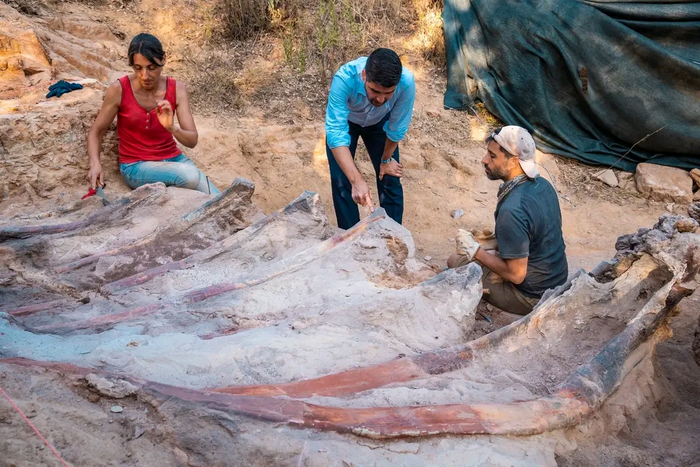Giant sauropod skeleton found in Portugal

To fulfill the dreams of every child’s paleontologist around the world, the skeletal remains of a possible sauropod, a group that includes the iconic genus Brachiosaurus, have been discovered in a backyard. The 82-foot-long skeleton was found in Pombal, a city in central Portugal.
In 2017, a property owner noticed fossilized bone fragments during a backyard construction project. The owner contacted a survey team who surveyed the site and launched an excavation campaign. This year, between August 1 and 10, paleontologists from Portugal and Spain were working at the site, which is believed to be the largest sauropod dinosaur fossil ever discovered in Europe. unearthed something.
[Related: This fossilized dinosaur embryo is curled up just like a baby bird.]
“It is unusual, let alone that all ribs in such animals are in this position while maintaining their original anatomical position. It is relatively rare in the fossil record of this species,” said Elisabete Malafaia, a postdoctoral researcher at the Faculty of Science, University of Lisbon, Portugal. press release.
Sauropods were herbivorous dinosaurs that stood on four legs (or quadrupeds) with long necks and tails. The smallest sauropod was about 50 feet, the largest (Brachiosaurus) was a staggering 98 feet tall, and weighed him over 170,000 pounds.

Researchers have collected important axial skeleton parts from this site, including the vertebrae and ribs of a sauropod dinosaur believed to be a brachiosaur. The group of brachiosaurids lived from about 160 million years ago to the late Jurassic and early Cretaceous periods, about 160 million years ago. Brachiosaurids are characterized by highly developed forelimbs. Some of the most notable species in this group of sauropods are Brachiosaurus Altitrax, Giraffatitan BlancayWhen Lusotitanium Atalaiensis (found in western Portugal). The leaf-devouring, herd-moving Brachiosaurus was also the first dinosaur discovered by the famous fictional paleontologist Alan Grant, the tenacious fictional paleobotanist Ellie Sattler, and the witty fictional animal. Kaotishan Ian Malcolm in the 1993’s Jurassic Park.
[Related: The largest dinosaurs got huge way earlier than we thought.]
The team is now testing the hypothesis that there are other skeletal parts that could be found at other deposit sites.
“Studies at the Monte Agudo paleontological locality have confirmed that the Pombal region has an important fossil record of vertebrates from the late Jurassic period, which in the last decades have been inhabited in Iberia. It has provided a wealth of material discoveries that are of great importance to our knowledge of the continental fauna of the peninsula about 145 million years ago,” adds Malafia.













